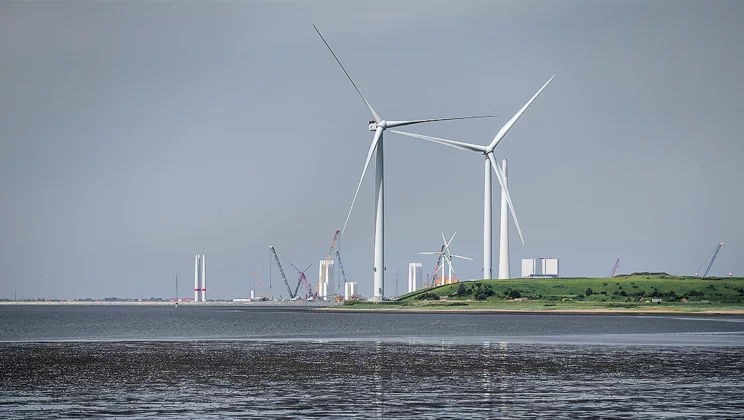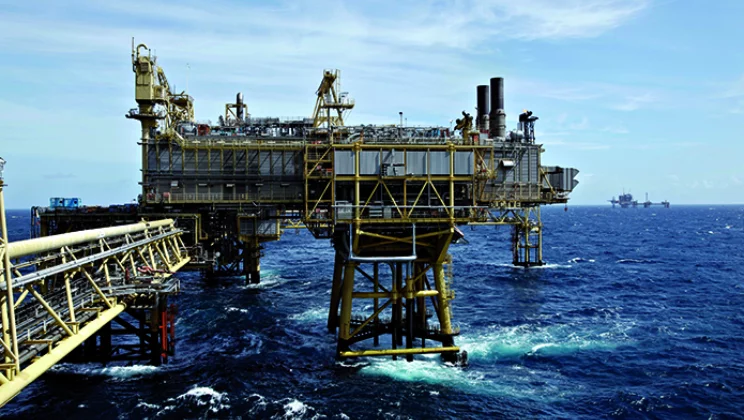The global energy landscape is in a state of flux, with large-scale shifts expected by 2040. That is the conclusion of the International Energy Agency (IEA) contained in their latest World Energy Outlook report, published in November 2017. The United States will become the world’s largest exporter of oil and gas, and in Europe wind power will become the leading source of energy. Excellent prospects for Danish energy production, but, in the opinion of the IEA, not an invitation for Denmark to rest on its laurels.
On a rainy November Monday in Copenhagen, the IEA presented the key findings of their new World Energy Outlook report to a group of politicians and business leaders. The report is published annually and outlines key trends in the global energy landscape.
This year, an in-depth review of the Danish energy landscape and outlook was also presented.
“Denmark is a front runner in renewables and the integration of wind power into electricity supply systems,” is one of the conclusions of the report. But if Denmark is to retain its edge, future focus points need to be addressed as global shifts in the energy landscape as we know it are taking place.
We interviewed Aad Van Bohemen, Head of Energy Policy and Security Division at the International Energy Agency, to hear his assessment of the future of wind, oil and gas in Denmark.
Wind power will be the number one source of energy by 2030
In Europe, renewables account for 80 percent of new capacity, and you claim that wind power will become the leading source of electricity in Europe by 2030, due to continued growth offshore, for example. Why is this happening now?
The political focus in Europe has been on supporting wind power development, which has been a key driver of growth in offshore wind power because of its contribution to cutting production costs. Over the past few years, several countries have also introduced competitive tenders for the award of contracts in the Netherlands, Denmark, the United Kingdom and Germany. As a result, some of the new projects starting up over the next two or three years will reduce costs by up to 50 percent compared with just four years ago. That is one explanation of why growth seems set to continue.
The Port of Esbjerg has seen a 60 percent increase from 2016 to 2017 in the volume of wind turbine components shipped from the port. Where, as you see it, should Denmark focus its attention if we are to maximise our future opportunities, for instance in the North Sea?
Overall, a challenge is facing not just Denmark, but all of Europe. While prospects are bright until 2020, from 2020 to 2030, there is no consensus on the European approach to wind power. What targets should we set for renewables? Who should contribute what? That uncertainty may challenge continued growth in offshore wind post-2020.

According to the IEA, wind power will be the number one source of energy in Europe by 2030.
The Tyra Field breathes new life into Danish gas production
You project that by the mid-2020s, the balance in the global oil and gas market will shift to make the United States the leading exporter of both oil and gas, especially LNG (Liquid Natural Gas). Denmark also still has large gas reserves. What role do you envisage for gas in the future Danish energy mix?
Danish gas production in the North Sea peaked several years ago and, according to the latest projection of the Danish Energy Agency, gas production will decline from the current 4 billion cubic metres (bcm) per year to approximately 1 bcm per year by 2020. Obviously, the great unknown is the Tyra Field, which was temporarily shut down while these calculations were made. Production may very well increase when the Tyra Field is up and running again in 2022 after its reconstruction.
What about the outlook for LNG? Some people believe LNG has potential in shipping. Do you agree?
The gas industry is exploring the potential for LNG to replace diesel as a fuel. This is definitely interesting because natural gas provides a good opportunity when the vessels of the future need to meet new IMO regulations for the sulphur content of ship fuel. But it is by no means certain that, in the here and now, this will translate into substantial volumes of LNG being used for transporting freight. Some ports are working actively to promote LNG as an alternative fuel, but I am not yet certain whether the shipping industry as a whole is prepared to foot the bill for switching to LNG. Maybe in the long term.
In your report, you emphasise that it is still too early to write oil off completely. How do you see the future of Danish oil production in the North Sea?
Oil will definitely still be needed in the transport sector, but given the Danish government objective of a fossil-free Denmark by 2050, we must expect oil consumption to change – also towards 2030.

The Tyra field will breathe new life into the Danish gas production, projects the IEA.
Go to overview

